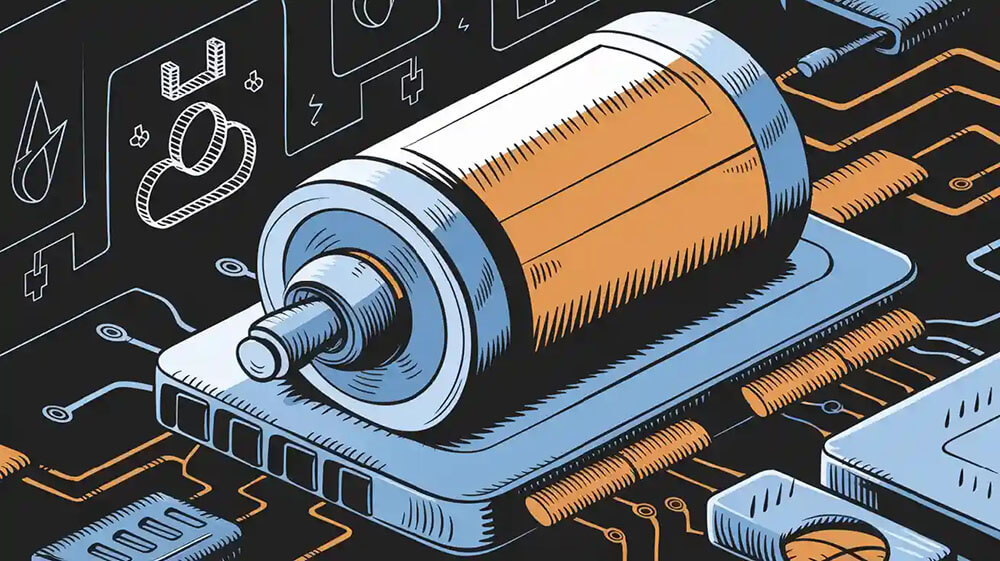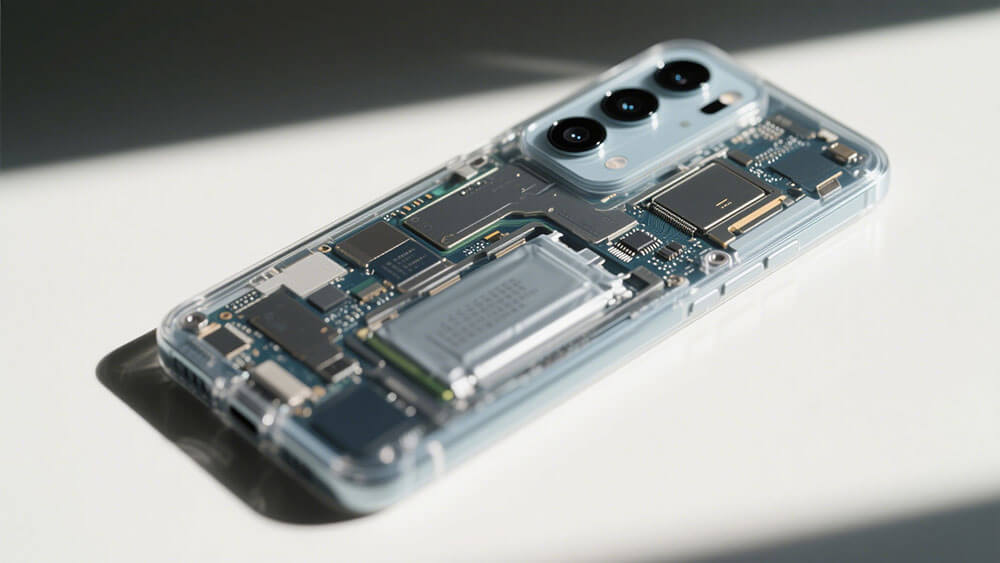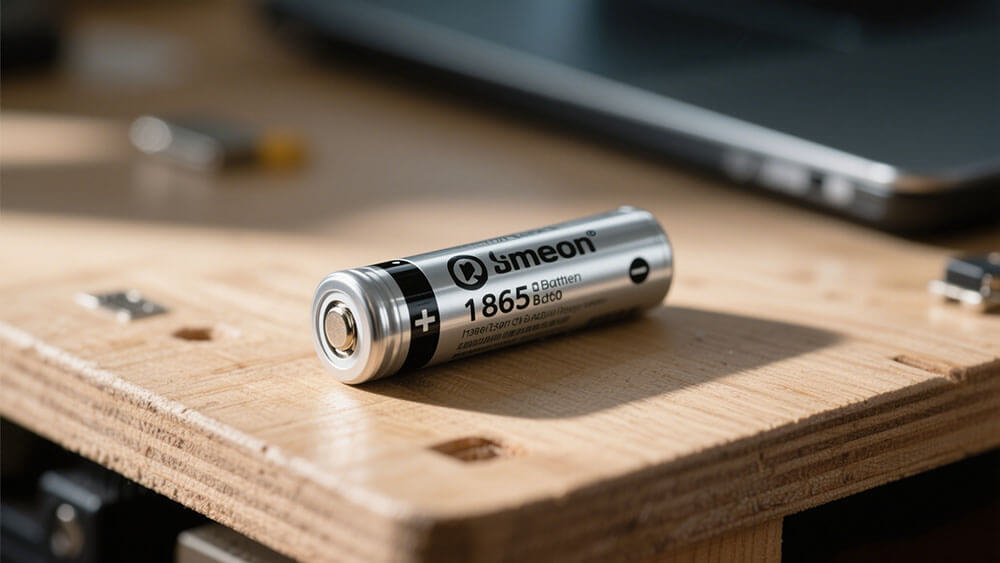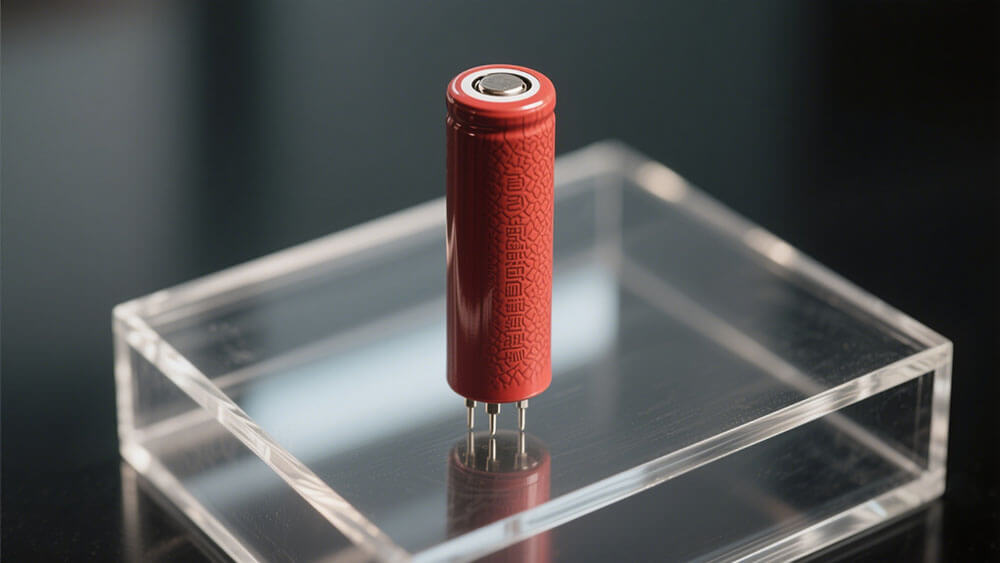
Lithium-ion batteries power modern industries with their unmatched efficiency and versatility. These batteries achieve energy densities up to 270 Wh/kg, outperforming alternatives like lead-acid batteries. Their dominance spans sectors such as medical, robotics, and industrial applications, driving growth to USD 145.60 billion by 2030. Understanding how lithium battery work helps you navigate this transformative technology.
Key Takeaways
Lithium-ion batteries store a lot of energy, perfect for electric cars and gadgets.
Knowing how lithium-ion batteries work helps use them safely and well in many fields.
Picking the right battery for the job improves how it works and lasts in things like robots and medical tools.
Part 1: Structure and Functionality

1.1 Components of a Lithium-Ion Battery Pack
A lithium-ion battery pack consists of several critical components that work together to store and release energy efficiently. These components include:
Cells (Li-ion cells): The core of the battery pack, li-ion cells, are responsible for energy storage. They come in various formats, such as cylindrical, prismatic, and pouch cells, each suited for specific applications.
Battery Management System (BMS): This system monitors and controls the performance of the li-ion cells. It ensures safety by preventing overcharging, overheating, and deep discharging.
Thermal Management System: Heat generation is a natural byproduct of lithium battery work. The thermal management system regulates temperature, ensuring optimal performance and longevity.
Housing and Connectors: The outer casing protects the internal components, while connectors facilitate the flow of electricity between the cells and the device.
The evolution of these components has significantly improved the reliability and efficiency of lithium-ion batteries. For instance, historical advancements like the introduction of lithium cobalt oxide in the 1980s and the development of the first practical lithium-ion battery in 1985 laid the foundation for modern battery packs.
1.2 How Lithium Battery Work: Storing and Releasing Energy
Understanding how lithium battery work involves examining the electrochemical processes within li-ion cells. When you charge a lithium-ion battery, lithium ions move from the cathode to the anode through an electrolyte. During discharge, the ions flow back to the cathode, releasing energy that powers your devices.
This process is highly efficient, with lithium-ion batteries achieving energy densities of 160-270 Wh/kg for NMC batteries and 180-230 Wh/kg for LCO batteries. These energy densities make them ideal for applications requiring compact and lightweight power sources, such as consumer electronics and electric vehicles.
Empirical studies have further enhanced our understanding of lithium battery work. For example, researchers have developed models to predict the remaining useful life (RUL) of lithium-ion batteries. These models, validated using NASA datasets, account for factors like capacity degradation and regeneration phenomena, ensuring accurate performance predictions.
1.3 Key Features of Advanced Battery Technology
Advanced battery technology has revolutionized energy storage by offering features that cater to diverse industrial needs. Key features include:
High Energy Density: Lithium-ion batteries provide superior energy density compared to alternatives like lead-acid batteries. This allows for longer runtimes and smaller battery sizes.
Long Cycle Life: Depending on the type, li-ion cells can last between 500 and 10,000 cycles. For example, LiFePO4 batteries offer 2,000-5,000 cycles, while LTO batteries can achieve up to 10,000 cycles.
Fast Charging: Advanced battery technology supports rapid charging, reducing downtime in applications like transportation and infrastructure.
Safety Mechanisms: Modern lithium-ion battery packs incorporate features like thermal management and BMS to ensure safe operation under various conditions.
Reliability testing further validates these features. Tests include charge and discharge cycling, overcharge assessments, and environmental simulations. These rigorous evaluations ensure that lithium-ion batteries meet the demands of critical applications, from security systems to industrial automation.
By leveraging these advancements, industries can achieve greater efficiency and sustainability. For example, adopting lithium-ion batteries in infrastructure projects supports eco-friendly initiatives. Learn more about sustainability efforts from Large Power.
Part 2: Types of Lithium-Ion Batteries

2.1 Lithium Cobalt Oxide (LCO) and Its Applications
LCO Lithium batteries are widely used in portable electronics due to their high energy density. These batteries operate at a nominal voltage of 3.7V and offer a specific energy range of 180–230 Wh/kg, with some models reaching up to 240 Wh/kg. Their compact size and lightweight design make them ideal for devices like mobile phones, laptops, and cameras. However, LCO batteries have a shorter cycle life of 500–1,000 cycles and are more prone to thermal runaway at temperatures above 150°C. This limits their use in applications requiring high durability or safety.
2.2 Lithium Iron Phosphate (LiFePO4) for Industrial Use
LiFePO4 Lithium batteries are known for their exceptional stability and long cycle life, ranging from 2,000 to 5,000 cycles. They operate at a nominal voltage of 3.2V and provide a specific energy of 100–180 Wh/kg. These batteries are particularly suited for industrial applications, including robotics, solar energy storage, and electric vehicles. Their stable discharge voltage curve and lower self-discharge rates enhance reliability. Additionally, LiFePO4 batteries are often used to replace traditional 12V lead-acid batteries, reducing the number of cells required in a system.
2.3 Lithium Nickel Manganese Cobalt Oxide (NMC) in Battery Packs
NMC Lithium batteries combine high energy density with a long cycle life, making them versatile for various applications. They operate at a nominal voltage of 3.6–3.7V and achieve energy densities between 160–270 Wh/kg. These batteries are commonly used in electric vehicles, medical devices, and energy storage systems. Their balanced performance characteristics allow manufacturers to optimize for either energy or power, depending on the application. This flexibility has made NMC batteries a popular choice in modern battery packs.
2.4 Lithium Titanate (LTO) for High-Performance Needs
LTO Lithium batteries stand out for their safety and durability. They operate at a lower nominal voltage of 2.4V and provide a specific energy of 60–90 Wh/kg. Despite their lower energy density, these batteries excel in high-performance applications due to their rapid charge and discharge rates. With a cycle life of 3,000–10,000 cycles, LTO batteries are ideal for uninterruptible power supplies (UPS), solar-powered street lighting, and electric powertrains. Their robust thermal stability further enhances their reliability in demanding environments.
2.5 Comparing Battery Types for Specific Applications
The table below summarizes the key performance metrics of the discussed battery types, helping you choose the right option for your needs:
Battery Type | Voltage (V) | Specific Energy (Wh/kg) | Cycle Life |
|---|---|---|---|
Lithium Cobalt Oxide (LCO) | 3.7 | 180–230 (up to 240) | 500–1,000 |
Lithium Iron Phosphate (LiFePO4) | 3.2 | 100–180 | 2,000–5,000 |
Lithium Nickel Manganese Cobalt Oxide (NMC) | 3.6–3.7 | 160–270 | 1,000–2,000 |
Lithium Titanate (LTO) | 2.4 | 60–90 | 3,000–10,000 |
Each battery type offers unique advantages and trade-offs. For example, LCO batteries provide high energy density but have limited cycle life, while LiFePO4 batteries excel in stability and longevity. Understanding these differences ensures you select the most suitable battery type for your application.
Part 3: Advantages and Disadvantages

3.1 Benefits of Advanced Battery Technology
Lithium-ion battery technology offers numerous advantages that make it indispensable across industries. These batteries provide high energy density, allowing devices to operate longer without increasing their size or weight. For example, NMC Lithium batteries achieve energy densities of 160–270 Wh/kg, making them ideal for electric vehicles and medical devices. Their compact design supports portability and efficiency in applications like robotics and consumer electronics.
Another significant benefit is the long battery lifespan. Depending on the chemistry, lithium-ion batteries can last between 500 and 10,000 cycles. LiFePO4 Lithium batteries, for instance, offer 2,000–5,000 cycles, making them suitable for industrial applications requiring durability. Additionally, these batteries recharge faster than traditional alternatives, reducing downtime in critical operations such as infrastructure and transportation.
Modern lithium-ion batteries also feature advanced safety mechanisms, including overcharge protection and thermal management systems. These safety features minimize risks associated with charging Li-ion cells and discharging Li-ion cells, ensuring reliable performance even under demanding conditions. Furthermore, their fast charging capability enhances productivity in industries where time is a critical factor.
Empirical data highlights the energy efficiency improvements achieved through optimized lithium-ion battery designs. The table below illustrates the environmental benefits of these advancements:
Environmental Factor | Traditional Design (kg eq) | Optimized Design (kg eq) | Improvement (%) |
|---|---|---|---|
Resource Depletion | 85 | 65 | 23.5 |
Global Warming Potential | 100 | 80 | 20 |
Toxicity | 70 | 55 | 21.4 |
Water Usage | 60 | 50 | 16.7 |
Energy Consumption | 90 | 75 | 16.7 |
These improvements demonstrate the sustainability of lithium-ion batteries, aligning with eco-friendly initiatives in industrial and commercial sectors.
3.2 Challenges and Risks, Including Discharging Safety
Despite their advantages, lithium-ion batteries present challenges and risks that require careful consideration. One of the primary concerns is the potential for thermal runaway during discharging li-ion cells. This phenomenon occurs when excessive heat triggers a chain reaction, leading to fires or explosions. Although modern batteries incorporate safety features like battery management systems, incidents still occur.
Historical data provides insights into these risks:
Incident Description | Consequences |
|---|---|
A group of batteries intended for disposal caught fire during temporary storage, leading to minor injuries for an employee. | Minor injuries due to fumes and smoke. |
A lithium-ion battery caught fire on an assembly line, requiring 2.5 hours for the fire department to control it. | Significant operational disruption. |
A truck carrying lithium-ion batteries overturned, causing a fire and shutting down a major freeway for two days. | Traffic issues and heat-related medical problems for drivers. |
A single battery cell fire led to explosions, resulting in 22 fatalities and 8 injuries. | Major loss of life and injuries. |
A battery fire at a test center required extensive firefighting efforts and resulted in damage. | Significant financial loss and operational impact. |
Discharging hazards have improved significantly over the years. For instance, the failure rate of lithium-ion battery packs has decreased from one-in-200,000 to one-in-10 million. However, with billions of cells produced annually, even a small failure rate can result in hundreds of incidents. This underscores the importance of proper storage, handling, and the use of a quality charger to mitigate risks.
3.3 Safety Considerations for Lithium-Ion Battery Packs
Ensuring the safety of lithium-ion battery packs involves rigorous testing and adherence to industry standards. Manufacturers conduct various tests to validate the safety features of these batteries. The table below outlines some of these tests:
Test Condition | Description |
|---|---|
Temperature | Evaluates performance under extreme temperature variations to ensure thermal stability. |
Altitude | Simulates air pressure changes to ensure safety during air transport. |
Vibration | Assesses structural integrity against mechanical stresses during transport. |
Shock | Tests ability to withstand impacts and drops during handling. |
Humidity | Evaluates performance in humid environments to ensure reliability. |
Mechanical Testing | Assesses resistance to physical damage through compression and impact tests. |
Electrical Testing | Evaluates efficiency and reliability through capacity measurement and charge/discharge cycling. |
These tests ensure that lithium-ion batteries meet the safety requirements for applications in medical devices, robotics, and security systems. Overcharge protection and thermal management systems play a crucial role in preventing accidents during charging li-ion cells and discharging li-ion cells. Additionally, maintaining the correct charging voltage and charging current is essential for prolonging battery lifespan and ensuring safe operation.
For industries relying on lithium-ion batteries, investing in custom battery solutions tailored to specific needs can enhance safety and performance. Explore custom solutions here.
Lithium-ion batteries have revolutionized energy storage with their high energy density, long cycle life, and versatility. Proper handling and maintenance, such as monitoring charging voltage and temperature, ensure safety and longevity. These batteries are pivotal in renewable energy storage, robotics, and infrastructure, driving sustainability and innovation across industries.
Lithium-ion batteries are transforming industries by enabling cleaner, smarter, and more connected solutions. They power applications ranging from electric vehicles to portable tools, making them indispensable for modern industrial and commercial needs.
For tailored solutions that meet your specific needs, consult Large Power.
FAQ
1. What makes lithium-ion batteries suitable for medical devices?
Lithium-ion batteries provide high energy density and long cycle life, ensuring reliable power for critical medical devices.
2. How do LiFePO4 Lithium batteries benefit industrial applications?
LiFePO4 Lithium batteries offer stability, long cycle life (2,000–5,000 cycles), and safety, making them ideal for industrial use.
3. Can Large Power customize lithium-ion battery solutions for specific needs?
Yes, Large Power specializes in tailored lithium-ion battery solutions for diverse industries.




